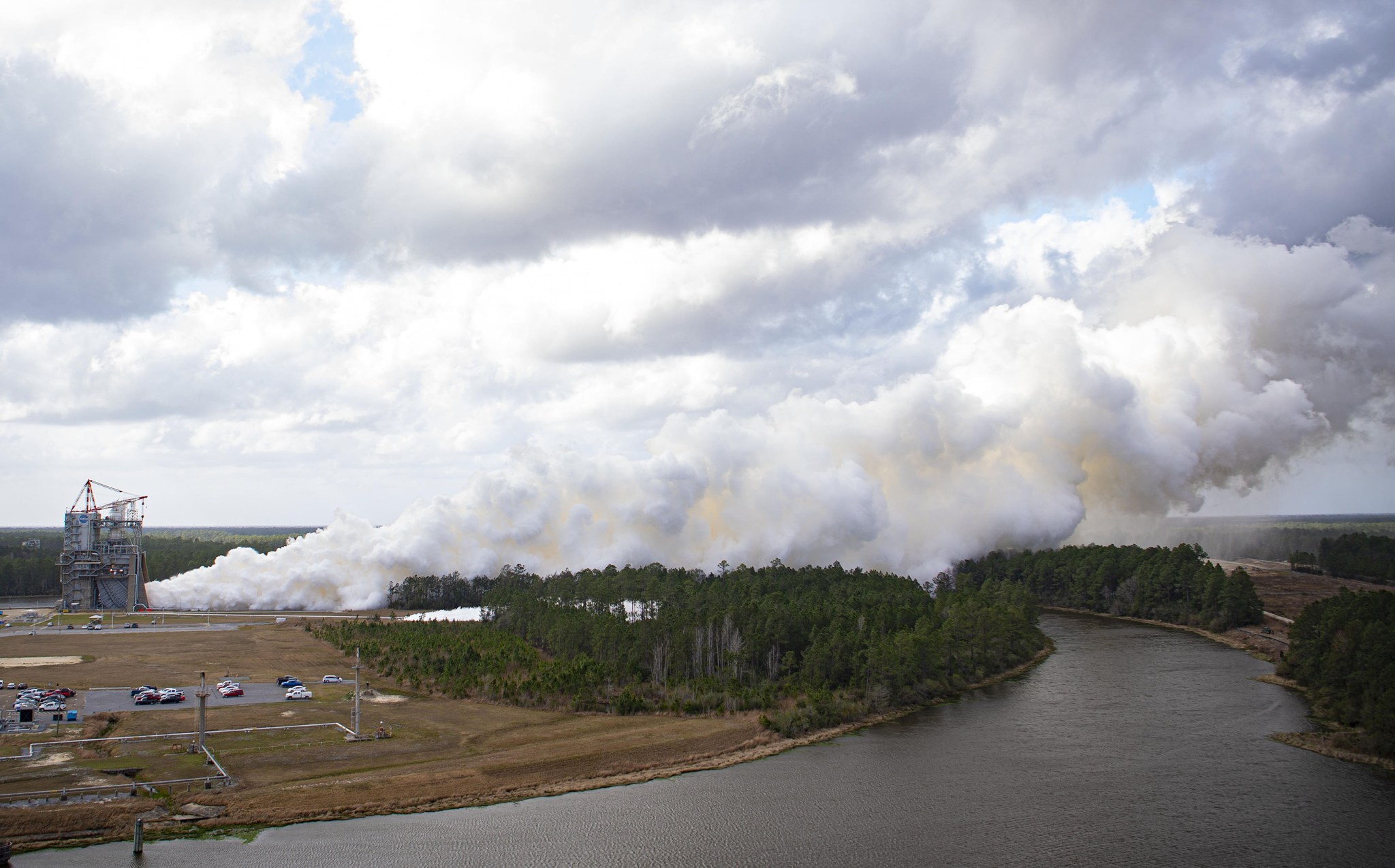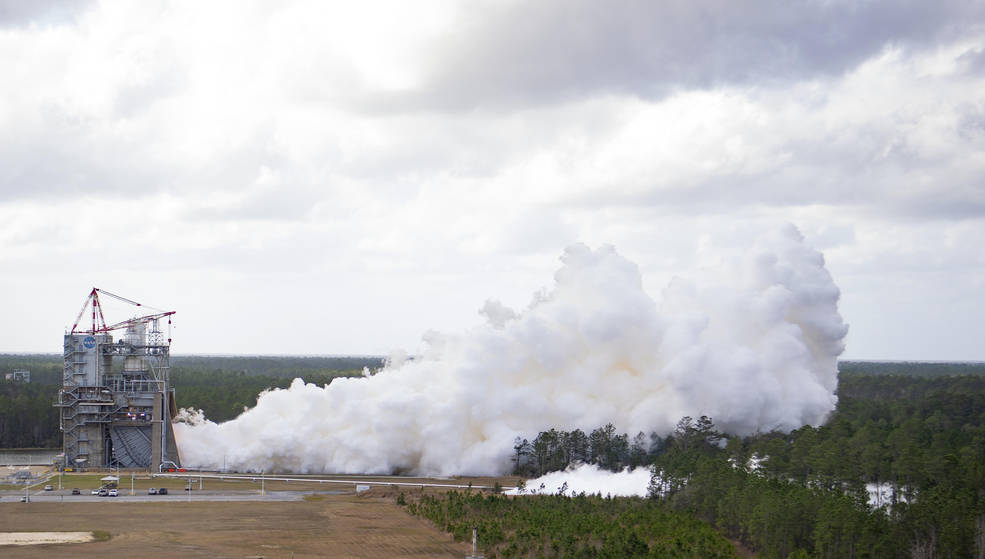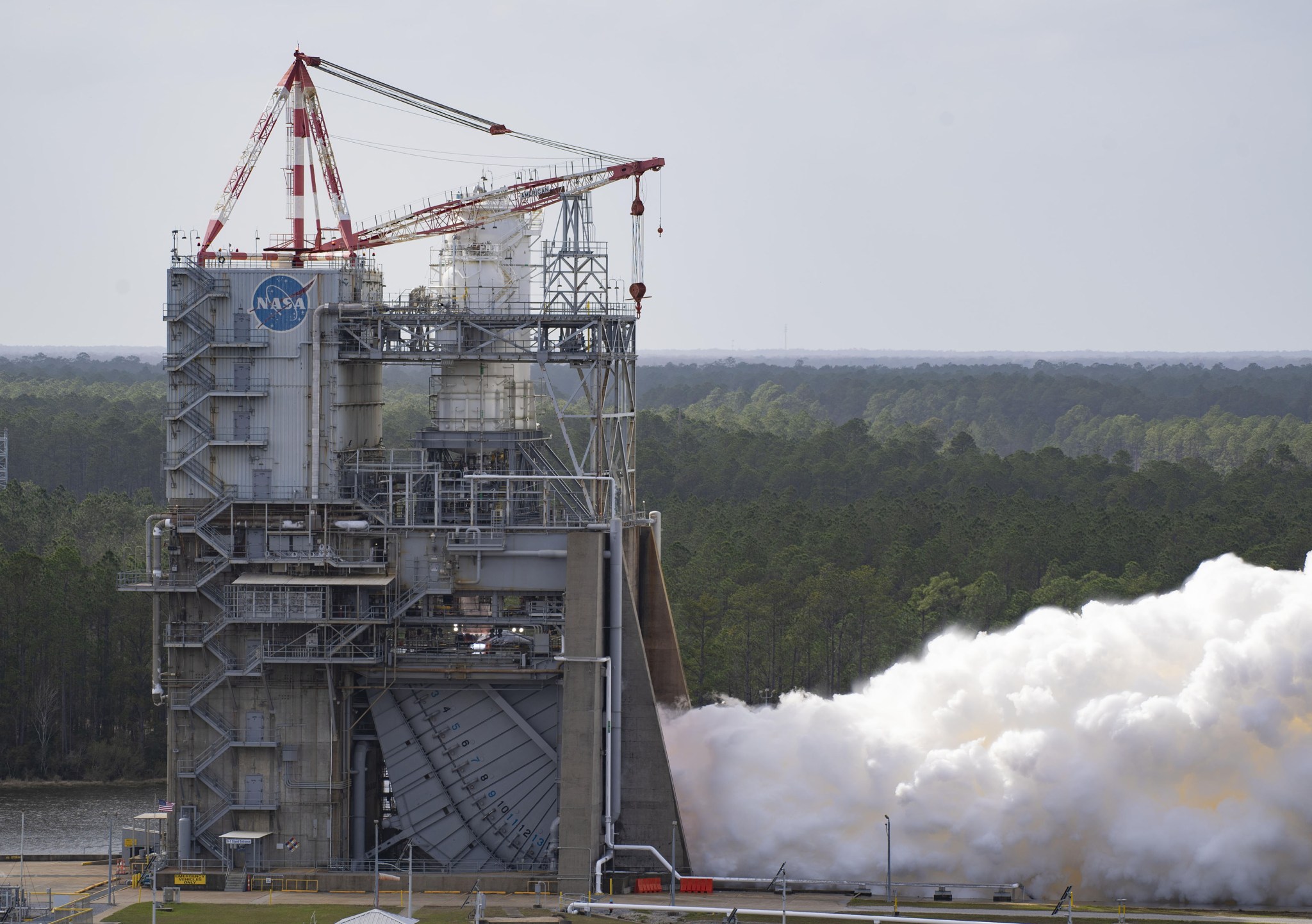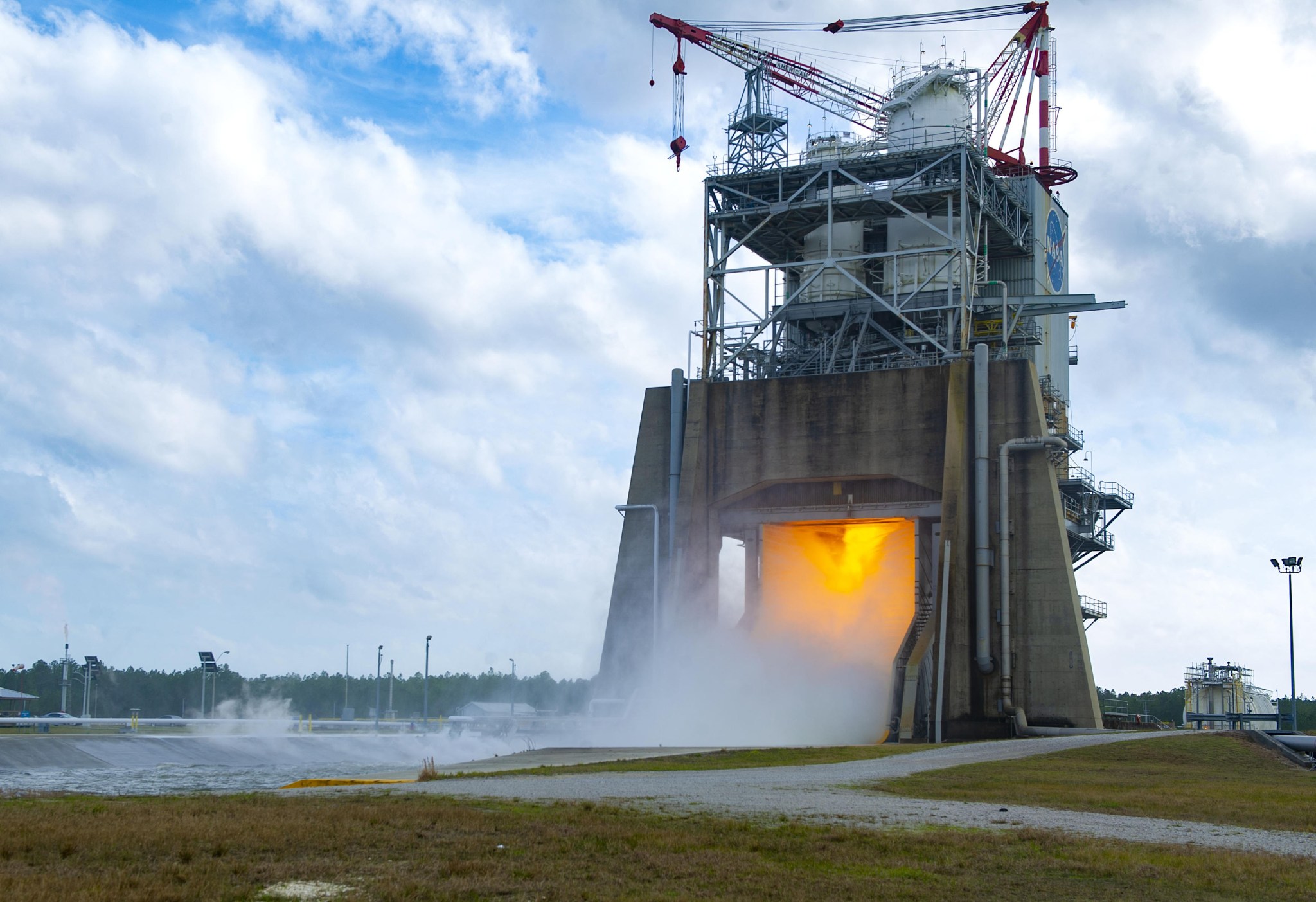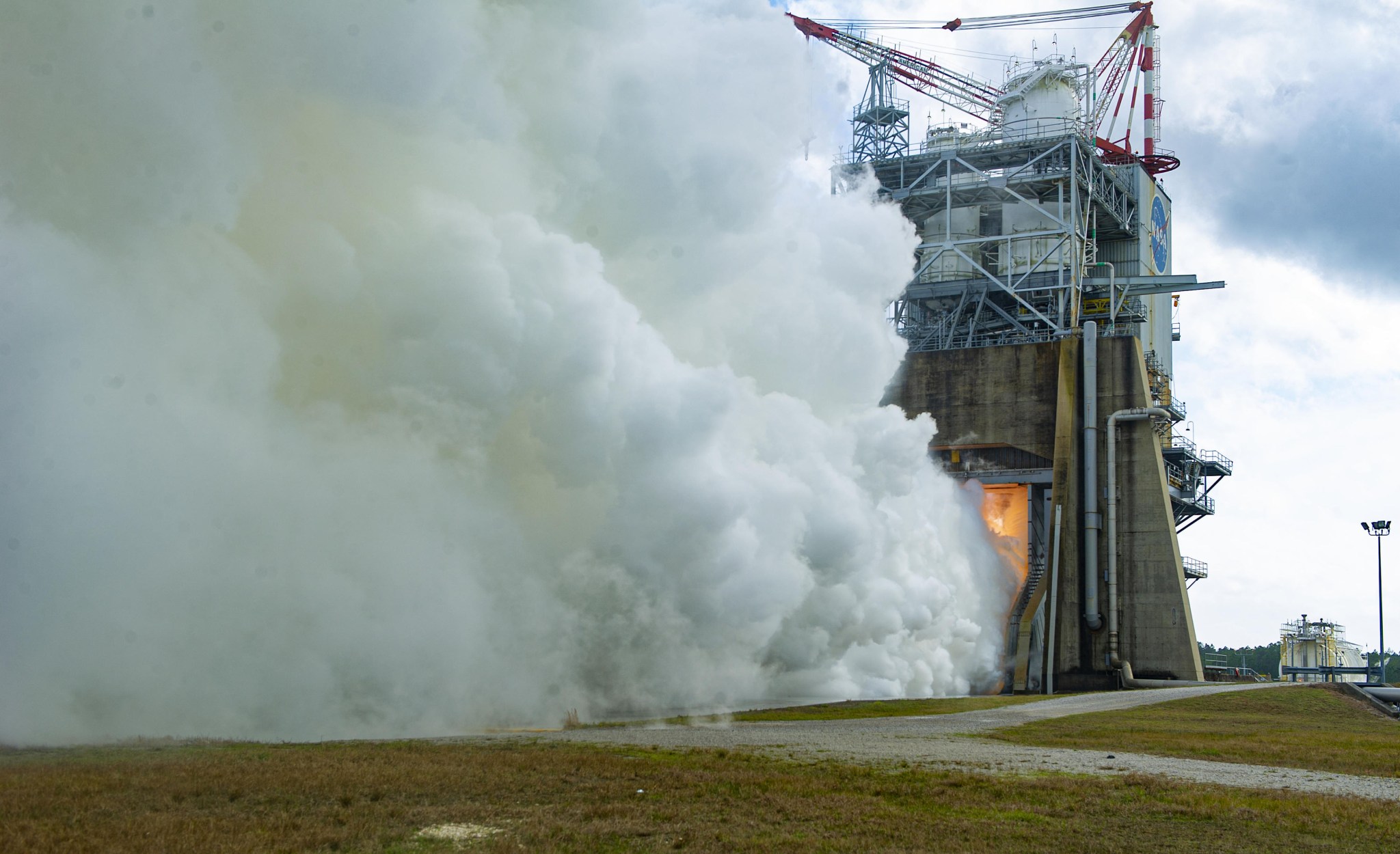Engineers hot fire tested a redesigned RS-25 engine Feb. 22 for future flights of the Space Launch System (SLS) rocket on Artemis missions to the Moon.
The test, conducted on the Fred Haise Test Stand at NASA’s Stennis Space Center near Bay St. Louis, Mississippi, is part of a certification series to support production of new RS-25 engines by lead SLS engines contractor Aerojet Rocketdyne. As NASA explores the secrets of the universe for the benefit of all, the new engines will help power future Artemis missions, beginning with Artemis V.
Operators fired the RS-25 engine up to 111% power level – the same level needed to help the SLS lift the Orion spacecraft and other future payloads to orbit – for 10 minutes (600 seconds), more than the 500 seconds the engines must operate to reach space. Longer-duration hot fires allow operators to test the limits of engine performance and provide a margin of safety for flight operations.
The hot fire is the latest in an ongoing series of tests to certify new manufacturing techniques and processes for production of RS-25 engines. Four engines fire simultaneously, providing up to 2 million pounds of combined thrust, to help power the launch of the SLS to orbit.
At the end of the Space Shuttle Program, NASA had 16 remaining main engines, some of the most sophisticated and proven in the world. The agency decided to upgrade the engines for use on the SLS.
In January 2015, NASA Stennis began testing to enable the engines to provide additional power needed to launch the SLS rocket. Among other modifications, Aerojet Rocketdyne provided the engines with a new controller – or “brain” – to monitor performance.
In 2019, NASA contracted with Aerojet Rocketdyne to produce new RS-25 engines for future SLS missions beyond Artemis IV, to be manufactured with advanced processes, such as 3D printing, to reduce production time and costs. NASA began developmental testing in May 2020 to provide performance data for the new processes, and NASA Stennis upgraded its Fred Haise Test Stand last year to prepare for the new round of testing.
On Feb. 8, NASA conducted the first test of a newly redesigned RS-25 engine. The subsequent 12-test series will demonstrate that Aerojet Rocketdyne is prepared to produce engines for future missions.
Through ongoing Artemis missions, NASA will send humans to the Moon to establish a sustainable presence and prepare for missions to Mars. The agency plans to establish an orbiting Gateway habitat orbiting the Moon and develop the techniques and capabilities needed for journeys to other deep space destinations.
Every RS-25 engine that helps power SLS will be tested at NASA Stennis. RS-25 tests at the site are conducted by a combined team of NASA, Aerojet Rocketdyne, and Syncom Space Services operators. Syncom Space Services is the prime contractor for Stennis facilities and operations.
For information about the Space Launch System, visit:
C. Lacy Thompson
Stennis Space Center, Bay St. Louis, Miss.
228-363-5499
calvin.l.thompson@nasa.gov



























